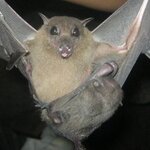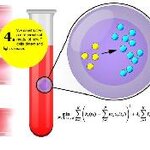Immunology

Researchers have discovered a new SARS-like virus that can jump directly from its bat hosts to humans without mutation.
The discovery is notable because there is no treatment for this newly discovered virus, and it highlights an ongoing debate over the Obama administration's decision to ban all gain of function experiments on a variety of select agents earlier this year. In the previous administration, even a limitation on federal funding for some types of science was decried as a ban but another actual ban has only gotten a muted response - yet this ban has actual implications because…

Deep within your DNA, a tiny parasite called a LINE-1 retrotransposon lurks, waiting to pounce from its perch and land in the middle of an unsuspecting healthy gene. If it succeeds, it can make you sick. Like a jungle cat, this parasite sports a long tail but little was known about what role that tail plays in this dangerous jumping.
Today, scientists report that without a tail, this parasitic gene can't jump efficiently. The parasite is a piece of DNA that carries its own instructions for making a piece of "rogue" genetic material and two proteins that can help it jump. "Jumping"…

Many patients with serious diseases are not helped by their medications because treatment is started too late. An international research team led from Linköping University is launching a unique strategy for discovering a disease progression in its earliest phase.
The study, to be published in Science Translational Medicine, has been led by Professor Mikael Benson and Dr Mika Gustafsson at the Centre for Individualized Medication (CIMed).
"We're addressing one of the biggest problems in healthcare, one that leads to a great deal of suffering and enormous costs in terms of drugs and drug…

Chagas disease, the third most common parasitic infection in the world, affects approximately 7.5 million people, mostly in Latin America. To help reduce outbreaks of this disease in their countries, the United States and Mexican governments should implement a range of programs as well as fund research for the development of Chagas vaccines and treatments, according to a new policy brief.
T. cruzi is not normally transmitted from person to person but is spread through insects called triatomines, also known as "kissing bugs." Kissing bugs spread Chagas disease directly to humans through their…

Pregnant women and new mothers are inundated with messages regarding the benefits of exclusive breastfeeding for babies in the first year of life and if you don't do that, shame on you for giving your child asthma, food allergies and eczema.
Except there is no significant difference in allergies were found between children who were ever breast fed versus those formula fed.
The study examined 194 patients, aged 4-18 years old, who had been diagnosed as having hay fever with documented results via a skin prick test. The patients were divided into two groups based on whether they were ever…

The HIV epidemic among gay men in the Netherlands isn't going to decline as long as large, persistent, self-sustaining, and, in many cases, growing sub-epidemics shifting towards new generations of gay men, according to a new paper in PLOS Medicine by Daniela Bezemer from HIV Monitoring Foundation, Amsterdam, the Netherlands, and Anne Cori from Imperial College London, UK, and colleagues.
Despite decades of awareness, billions of dollars in outreach and prevention of HIV infection, the HIV epidemic among gay men is resurgent in many Western countries. For a new study, the researchers…

Scientists call them toxins but these bacterial proteins don't poison us, at least not directly. Instead, they restrain the growth of the bacteria that make them, establishing a dormant "persister cell" state that is tolerant to antibiotics.
Researchers at Emory University School of Medicine have obtained precise pictures showing how a toxin protein, called HigB, recognizes and rips up RNA as part of its growth-inhibition function. Their findings could lead to a better understanding of the formation of persister cells and how they maintain themselves.
"Persister cells survive antibiotic…

In 2014, one person confirmed with Ebola set off a panic in the United States. Though 28,000 people died of heart disease while media attention focused on that outbreak, and anti-vaccine parents on the West Coast were suddenly prepared to spend any amount of money to get their kids immunized against it, what happened with pandemic preparation after the fear subsided was...not much.
The fact is, we tend not to think about disaster preparedness unless disaster is already upon us. This makes some sense, of course, because people may be hungry right now so there isn't much point to spending money…

A new study has found that nearly half of camels in parts of Kenya have been infected by the virus that causes Middle East Respiratory Syndrome (MERS) and calls for further research into the role they might play in the transmission of this emerging disease to humans.
MERS was first identified in Saudi Arabia in 2012 and there is currently no vaccine or specific treatment available. To date, it has infected 1,595 people in more than 20 countries and caused 571 deaths. Although the majority of human cases of MERS have been attributed to human-to-human infections, camels are likely to be a major…

Plotting on a grid just how a chicken walks may one day give farmers more insight into how best to protect their flock from non-airborne pathogens that can also hurt their profit.
The models basically show, not the gait, but the walk patterns of chickens in a pen. Laid out on a grid, the paths chickens take from say the corner of the pen to the food bowl and back, look like a colorful albeit confusing racetrack.
But by plotting the patterns and multiplying them by the number of chickens in a pen, the mathematical model may help clarify quite literally how many ways/times chickens cross each…